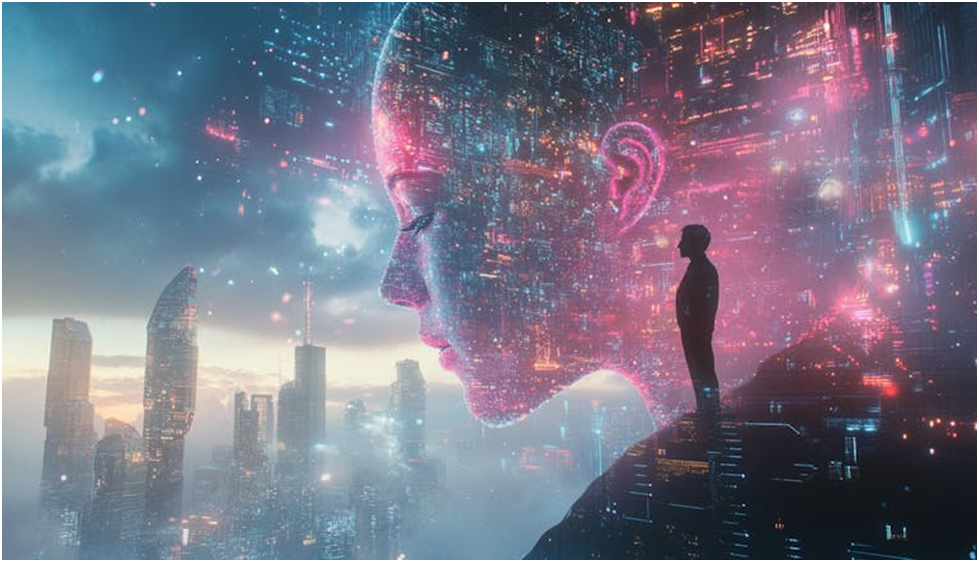In a dimly lit gallery, an image shimmers on the screen—a vibrant cascade of colors and forms, intricate yet unmistakably synthetic. This is not merely a digital art piece; it’s the result of a high quality AI art generator that merges artificial intelligence with non-fungible tokens (NFTs). Welcome to the cutting-edge world where technology reshapes what it means to create, own, and value art.
This evolving landscape doesn’t just present a new medium for artists to explore; it fundamentally alters the dynamics of digital ownership. NFTs provide a transparent and immutable ledger for claiming ownership, while AI fuels unprecedented creativity by generating unique artworks that challenge our understanding of originality. Together, they form an intriguing nexus teeming with opportunities for tech enthusiasts, digital artists, NFT investors, blockchain aficionados, and AI researchers alike. As these technologies continue to converge, they promise not only to redefine the notions of artistic authenticity but also to revolutionize how we perceive value in the digital realm.
Understanding AI in Digital Art
Artificial Intelligence (AI) has moved from science fiction to tangible reality, transforming various sectors, including the art world. At its core, AI refers to the simulation of human intelligence processes by machines, especially computer systems. These processes include learning, reasoning, and self-correction. In digital art, AI algorithms can analyze vast datasets of images and learn artistic styles and techniques. Once trained, these programs generate new pieces of art that often blend traditional elements with innovative touches.
The concept of algorithmic or generative art dates back much earlier than one might think. In the 1960s, artists like Harold Cohen began experimenting with computer-generated drawings using early computer systems. Cohen's program AARON could create complex compositions autonomously, a precursor to today's advanced AI capabilities. Though rudimentary compared to modern standards, these early explorations laid the groundwork for contemporary AI-driven artworks.
Today's advancements in AI have dramatically expanded what's possible in digital artistry. One notable example is "Edmond de Belamy," a portrait created by an AI from Paris-based collective Obvious, which sold for $432,500 at Christie's auction house in 2018. The painting was produced using Generative Adversarial Networks (GANs), where two neural networks collaborate and compete to refine their outputs continuously. Such breakthroughs highlight how far AI has come — from simple algorithmic doodles to high-value masterpieces showcasing unique yet machine-informed creative expressions.
Future Prospects
As artificial intelligence and NFTs continue to evolve, several exciting innovations are on the horizon. Imagine AI models that not only create art but also learn to adapt and evolve their styles based on user preferences. For example, a future where you can own an NFT that adjusts its artistic elements in real-time according to your mood or environment is closer than it seems. This dynamic blend of personalization and technology promises to elevate digital ownership to unprecedented levels.
In terms of marketplace evolution, we could see more decentralized platforms dedicated solely to AI-generated artworks. Such platforms might incorporate sophisticated algorithms for better validation and verification processes, ensuring authenticity without human oversight. User behavior will also likely shift as collectors become more aware of these advancements. Expect a surge in value for "interactive" NFTs—those that offer unique experiences rather than static visual pieces.
The societal impacts are equally profound. As AI begins to blur the lines between machine-generated and human-created art, our understanding of creativity could undergo a paradigm shift. What does it mean when a machine can produce work indistinguishable from a human artist's? This challenge to traditional concepts of originality might prompt us to reassess how we attribute value—not just in financial terms but also in cultural significance.
Engaging with this New World
For artists, buyers, and enthusiasts eager to dive into the NFT space, starting can seem daunting. Yet, the first step is often simpler than it appears. Artists should begin by creating a digital wallet that supports NFTs, such as MetaMask or Trust Wallet. From there, minting artwork on platforms like OpenSea or Rarible allows creators to tokenize and sell their unique files. Buyers should explore these same platforms, while also following auctions on marketplaces like Foundation or Nifty Gateway to purchase pieces that pique their interest.
The NFT community is a vibrant ecosystem that's continually evolving. Joining forums such as Discord servers dedicated to crypto art or Reddit threads about blockchain technology can provide valuable insights. Networking within these spaces allows for collaboration opportunities and keeps participants informed on industry trends. For instance, participating in events like virtual gallery showings often hosted by Decentraland introduces enthusiasts to new works and like-minded individuals.
Staying updated in this fast-paced domain is vital for anyone involved in the NFT world. Subscribing to newsletters from leaders in tech news, such as CoinDesk or The Block, ensures you never miss crucial updates about blockchain developments and market shifts. Following influential figures on social media—like artists Beeple and Pak—not only offers inspiration but also alerts you to emerging trends. Engaging actively through comments and discussions online helps keep your perspectives sharp and current.
Embracing the Future of AI-Generated NFT Art
As we have explored, the integration of artificial intelligence and non-fungible tokens represents a groundbreaking shift in digital art creation and ownership. From understanding AI’s role in generating unique digital works to grasping how NFTs redefine provenance and market value, this synergy opens new frontiers for tech enthusiasts, artists, and investors alike. Pioneering projects already illustrate the immense potential held by this convergence, even as we navigate ethical questions regarding creativity and intellectual property.
Looking ahead, the landscape of AI-enhanced NFT technology seems poised for remarkable growth. Artists are encouraged to experiment with these tools to create innovative works. Investors should consider exploring these assets as valuable additions to their portfolios. Engaging with this dynamic field offers not just financial opportunity but a chance to be part of a transformative cultural movement. Stay informed, participate actively in communities, and remain open to the endless possibilities that lie ahead at the intersection of technology and art.





Comments